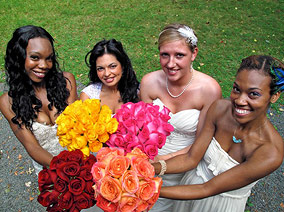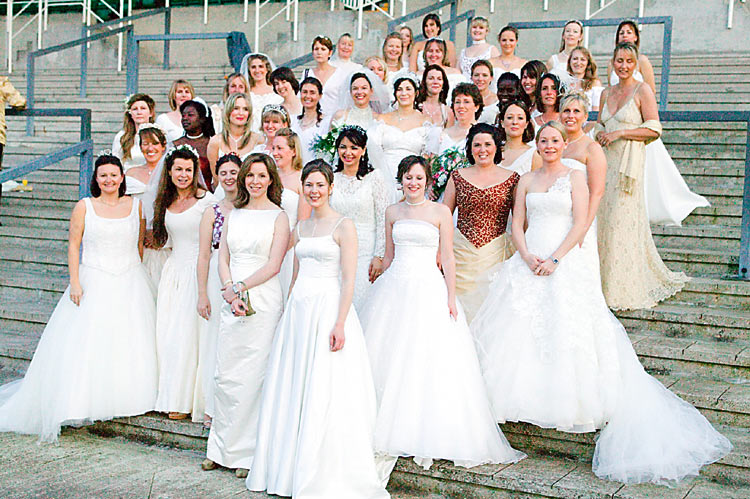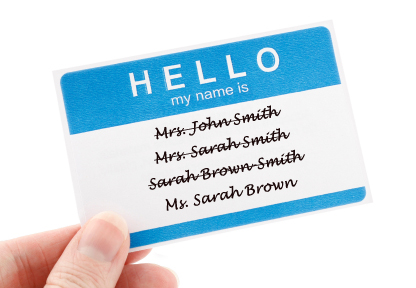Wedding Traditions


Wedding Planning: Motivating the Mister
What’s a bride to do when faced with an unmotivated fiancé? First, both bride and  groom must understand a wedding is not a “girlie” event. Wedding “How-to” books and magazines pressure us into various pretty accoutrements because their objective is to sell. If getting Joe to jump on board between a floral or candlelit centerpiece is the equivalent of pulling teeth, perhaps forcing an opinion is the wrong strategy. Teamwork and motivation is better accomplished when a task has a shared commonality, find something that perks your fiancés interest and learn to accept that orchids or other conventional décor might not. Wedding design, like marriage, is about compromise.
groom must understand a wedding is not a “girlie” event. Wedding “How-to” books and magazines pressure us into various pretty accoutrements because their objective is to sell. If getting Joe to jump on board between a floral or candlelit centerpiece is the equivalent of pulling teeth, perhaps forcing an opinion is the wrong strategy. Teamwork and motivation is better accomplished when a task has a shared commonality, find something that perks your fiancés interest and learn to accept that orchids or other conventional décor might not. Wedding design, like marriage, is about compromise.
Wedding culture encourages women to plan their wedding from early childhood. Joe probably hasn’t. Before the bride’s preconceived ideas can dominate wedding choices, let the groom have enough time to catch up and formulate his own. My fiancé also revealed that with a bride’s prefabricated wedding ideas, it’s sometimes easier to accept her idea than him accidentally offering an unpopular one. A wedding day will be more special if the groom feels comfortable with sharing and respected for his opinions. A bride might insist on pink, a groom on using the Steelers’ colors; but mutual agreement on something like a color scheme will encourage team ownership instead of individual isolation.
When it comes to inspiring a reluctant groom to help plan a wedding, it is important to understand his perspective. More importantly, a bride must manage her own expectations of how the whole planning process and choice selections should go down – abandon the ‘my way or the highway’ attitude. Magazines and industry marketing have spoon fed women ideas on “how” wedding planning should occur, but these are tools that perpetuate sexist divisions and prevent teamwork. Abandon the notion that a wedding is more for the bride than it is for the groom. Whether a bride and groom decide to release doves or fireworks or walk down the aisle to Kiss or Bach’s Canon in D, a team effort will eradicate the existing sexism in planning a wedding and a partnership will prevail.
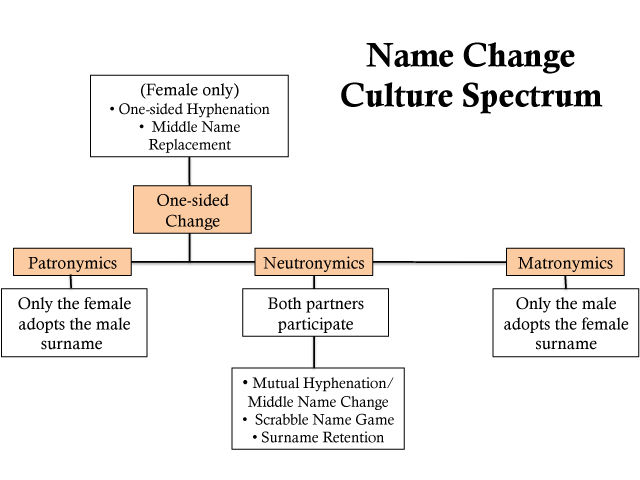

How Well Balanced Is Your Name Change Decision?
I created this ‘Name Change Cultural Spectrum’ for a lecture I gave at Tufts University this spring. I wanted people to understand where their decisions stand in the broader context of equality. For example, a lot of women who retain their surname but also incorporate their new spouse’s name through hyphenation will defend their decision as being progressive or feminist or seemingly more about equality. If you look on the spectrum, that one-sided name change is not as based on equality as we might like to think, especially since men typically do not join women in this one-sided hyphenation.
Also to show that existing name change culture does not encourage equality, I had to invent the term Neutronymics. Neutronymics is the adoption of a new name or combination of names created using the names of married individuals or the retention of separate surnames. It is meant to be a solution to those wishing to participate in neither patronymics nor matronymics and to increase name equality. Mutual hyphenation, the Scrabble Name Game and Surname Retention are all options people are aware of, but had never been grouped before or labeled. Labeling it gives it legitimacy and really puts into perspective the other options that favor one sex over another.
So when it comes time for you to get married and you’re not sure if you’re making the right decision that honors yourself and/or your partner – take a look at the Name Change Culture Spectrum. See where your decision places on the map and you’ll get a better sense as to whether you are helping to buck the dominating patriarchy, are alone in your name change decisions or are making a healthy decision that really promotes equality in your relationship and teaches women to value their name too. And if you’re a lady getting married, don’t forget to make the groom put in the same type of name change consideration you are putting in yourself!
 Why Women Change Their Last Names After Marriage
Why Women Change Their Last Names After Marriage
Wedding Invitation Name Etiquette
The Lucy Stone League: Crusaders for more name equality!
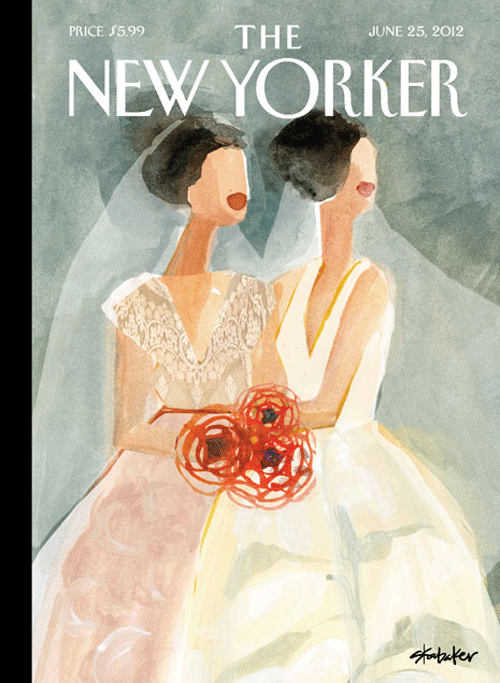

Same-Sex Brides Grace Cover of The New Yorker
The New Yorker’s June 25th cover features two “June Brides,” by the artist Gayle Kabaker’s. 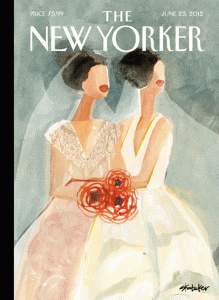 The magazine’s art editor, Françoise Mouly, found the image through her Blown Covers blog. (Click here if you’d like to see the runners up to the Blown Covers wedding contest and click here if you’d like to see my own feminist bride art (no harm in a little self promotion!) It’s unclear if there are any related stories in this week’s magazine, but the fact that that subjects are featured sweetly and beautifully over being portrayed as overtly political is a nice change of pace. When images like that happen it becomes more about capturing life than directly commenting on it (though acceptance of gay marriage is legally lagging any representation is important).
The magazine’s art editor, Françoise Mouly, found the image through her Blown Covers blog. (Click here if you’d like to see the runners up to the Blown Covers wedding contest and click here if you’d like to see my own feminist bride art (no harm in a little self promotion!) It’s unclear if there are any related stories in this week’s magazine, but the fact that that subjects are featured sweetly and beautifully over being portrayed as overtly political is a nice change of pace. When images like that happen it becomes more about capturing life than directly commenting on it (though acceptance of gay marriage is legally lagging any representation is important).
The Kabaker also had some nice points to make about her career and approaching the subject to kids and adults, “I live in the Berkshires, so I do almost all of my work online,” Kabaker said. “It’s a big deal, getting on the cover. We’ve been getting the magazine forever—it comes in and goes straight on the kitchen table. We talk about the cover with my son, who’s seventeen, and my daughter, who’s twenty-three. ‘What do you think it means?’ It’s a conversation. And we all read it, dog-ear it, and leave it on the table for the next person to pick up.”
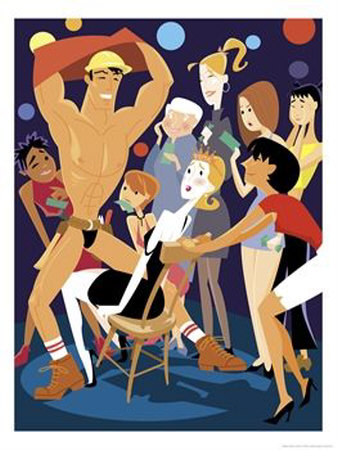

The Last Hurrah
It’s the last call, the final mile, and the end of an era. It’s the time you spend saying goodbye to singlehood: It’s the bachelor/bachelorette party.
spend saying goodbye to singlehood: It’s the bachelor/bachelorette party.
It’s a night that strikes fear into the hearts of many a young lover – where fiancés disappear in the night to sow wild oats; where irresistible strippers spread their legs for the almighty dollar; where “what happens in Vegas stays in Vegas” is more than just a motto, it’s a credo; and where the ability to remember the night’s events is worn either as a medal of honor or as a sign of disgrace.

The event itself has historically been the man’s day, yet women are now taking part as well. Some women dare to rival the debauchery of bachelor parties, but many also insist upon propriety and decorum above this one “get-out-of-jail free” card. No matter your taste in parties, it’s important to make sure the party is a representation of your ideals – not what other people think a bachelorette party should entail or how a woman should act.
Contrary to popular belief, I don’t believe this momentous night is about saying goodbye to singlehood. Whether you’re the bride with the “suck-for-a-buck” t-shirt, or want to form a sewing circle, a bachelorette party is more about bonding with friends – of all genders. Traditionally, this is a same-sex party, and while I’m all for ladies’ nights, women keep anatomically dissimilar friends these days. So invite your guy friends! There is no rulebook that says a bachelorette party has to be ”just the girls.”
We’ve all seen the trend where opposite-sex friendships dissolve because a significant other felt threatened, or that eventually the lady felt like the male friendship was inappropriate, whether it really was or not. What does it say about a relationship that limits with whom you can be friends? If you value a friendship of the opposite sex, it’s important to honor it, and if your partner values you, then he should respect these friendships as well. It’s a powerful testament to see brides make a man a bridesmaid, and vice versa. A relationship is stronger when a partner can accept friends of all shapes, sizes and anatomy.
As my friends and I brainstormed on my own party, we stopped to consider the girls in relationships – would their boyfriends and husbands approve of a bachelorette trip…to Vegas? We quickly noted the folly of this thought process – we considered ourselves progressive women, yet even we have been conditioned to look to our men for approval. Yes, it’s respectful to share information about the event, but we women have autonomy to make decisions, exercise that right, even if they are unpopular ones. So chose Vegas or whatever type of event that makes the night a happy one for yourself.
There are double standards when it comes to the party scene as well. Though equal opportunity partying is expected, it is still common for partners to be manipulated into thinking that if one partner abstains (for example, from seeing a stripper), the other should be held to the same standard. The desire to party hardy and see a stripper does not by default mean a partner is straying from the relationship (there’s a no touch policy in the strip joints anyway). Sayonara-singlehood parties do have a bad reputation, but a relationship falters not because of the nature of the party, but because of deeper, rooted issues in the relationship. If trust cannot be shown even in the brief presence of a stripper or just amongst friends, how can it ever be earned before you get to the altar?
Having experienced a bachelorette party or two already, I was constantly dismayed at how most women treated this opportunity. Most wanted to go to the beach and read – no alcohol, no scantily clad men, no penis pops or disastrous costumes only suitable for Halloween parties – not because it’s what they wanted, but because of a belief that this type of behavior was unbecoming and inappropriate since they were soon to be someone’s wife. In asking these ladies the reasons behind their choices, they simply explained, “those days are over for me.” These ladies, who in college did keg stands, flashed their assets and spent many a night praying to the porcelain god, could not let their hair down for one night. It is perfectly fine to move past college nights of drunken debaucheries – BUT – there’s no need to assume sainthood just because we’re putting a ring on our fingers. Neither extreme is a fair representation of who we are or who we will be, because the truth of the matter is once we do marry, we’re still the same girls who ran naked through the quad freshman year. History does not have to repeat itself, but we also don’t have to abandon it either. Your partner loves you for who you are now, not who you will become. Don’t change and compromise yourself because you think you have to as a wife.
The truth is there is no such thing as a “last hurrah.” We said goodbye to singlehood the moment we stepped into a monogamous relationship. A bachelor/bachelorette party is not a chance to experience singlehood for “one last time” – it’s a chance for camaraderie with your closest friends, to laugh, to relax. These parties are harmless, but when more power is given to its stereotypes over trust in a long-term relationship, it’s a sign of weaknesses in the relationship. If these issues come to light, it is my hope that the partner has enough confidence to reassess the relationship, or at least address the real issue at hand. If there is real trust and each partner understands the true reasons behind hosting a bachelor/bachelorette, which is friendship, then there should be no limitations in the style of a bachelorette party. We should be free to be ourselves amongst our friends, men and women alike – be it a night full of shots or a relaxing day at the spa.


FB Movie Review: The Buccaneers
![]() The Buccaneers (TV mini-series 1995) – If you like romantic period pieces this
The Buccaneers (TV mini-series 1995) – If you like romantic period pieces this  series is for you. The Buccaneers is the last novel written by Edith Wharton of four young American girls with “new” money that spend a season in England in the hopes of finding rich, aristocratic husbands. The girls are successful but their stories unravel as being married and someone’s wife reveals a much more sordid and unsatisfying life than they had been lead to believe. How the girls cope with obligation, expectations of their sex and class and love is worth a watch. (Subject: Marriage, Etiquette, Love) Director: Philip Saville
series is for you. The Buccaneers is the last novel written by Edith Wharton of four young American girls with “new” money that spend a season in England in the hopes of finding rich, aristocratic husbands. The girls are successful but their stories unravel as being married and someone’s wife reveals a much more sordid and unsatisfying life than they had been lead to believe. How the girls cope with obligation, expectations of their sex and class and love is worth a watch. (Subject: Marriage, Etiquette, Love) Director: Philip Saville
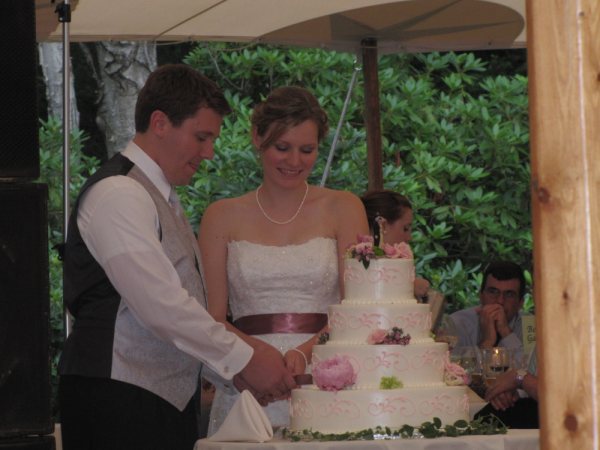

Cutting the Cake Art Performance
The ritual is a Freudian performance both caring and nurturing but sexual and intimate. What happens when you take the ritual out of context, put it in an informal settings and practice it with strangers? To better understand the art performance, watch Part 4: The Cutting of the Cake from the lecture.
An art performance of the ‘cutting of the cake’ wedding ritual following the Tufts University Women’s Center 2011 Symposium lecture, “The Sexy and Sexist Layers of the Wedding Cake,” by Katrina Majkut founder of TheFeministBride.com.


Acid Throwing and Forced Marriage Now Illegal in Pakistan


Full Lecture: The Sexy and Sexist Layers of the Wedding Cake
Katrina Majkut, founder of TheFeministBride.com, speaking on “The Sexy and Sexist Layers of the Wedding Cake”


Vera Wang’s New Bridal Gowns Will Change Bridal Tradition
Vera Wang exhibited her Fall 2012 Collection of bridal gowns at New York’s bridal fashion 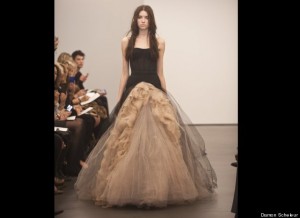 week and shocked the fashion nobility. The designer who knows how to dress every bride in her dream gown is dressing brides in her own signature color – black. Yes folks that’s right, seems like the Queen of Bridal couture has had a moment of clarity – that most of us ain’t virgins on our wedding day (Actually it’s estimated only 5% of us are), so why bother wearing white?
week and shocked the fashion nobility. The designer who knows how to dress every bride in her dream gown is dressing brides in her own signature color – black. Yes folks that’s right, seems like the Queen of Bridal couture has had a moment of clarity – that most of us ain’t virgins on our wedding day (Actually it’s estimated only 5% of us are), so why bother wearing white?
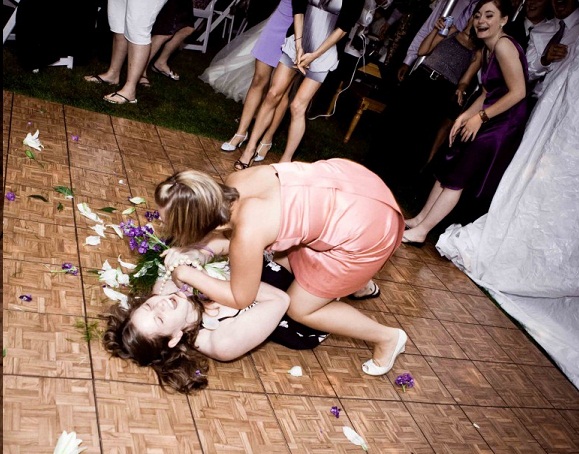
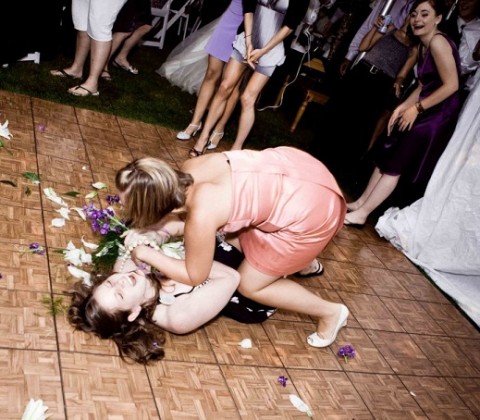
Feminist Fight for Change, Not The Wedding Bouquet
(This post first appeared 4/17/2010) Come July, I am marrying a man, I will wear white, I will 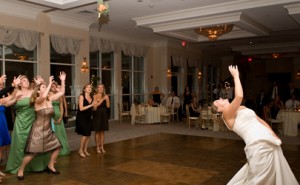 even wear high heels (for at least a portion of the wedding) and I call myself a feminist. As a bride and a feminist, my goal is to dissect the formal, patriarchal institution of weddings in order to modernize the practice and align with current women’s rights. So, because this is a topic that I have been actively thinking on for months, it came as no surprise to me when Jessica Valenti, feminist and author of Full Frontal Feminism and the website www.Feministing.org, announced her marriage to a man and her intention to wear a bridal gown. The overwhelming discontent and criticism from Valenti’s feminist readership, on the other hand, was a surprise.
even wear high heels (for at least a portion of the wedding) and I call myself a feminist. As a bride and a feminist, my goal is to dissect the formal, patriarchal institution of weddings in order to modernize the practice and align with current women’s rights. So, because this is a topic that I have been actively thinking on for months, it came as no surprise to me when Jessica Valenti, feminist and author of Full Frontal Feminism and the website www.Feministing.org, announced her marriage to a man and her intention to wear a bridal gown. The overwhelming discontent and criticism from Valenti’s feminist readership, on the other hand, was a surprise.
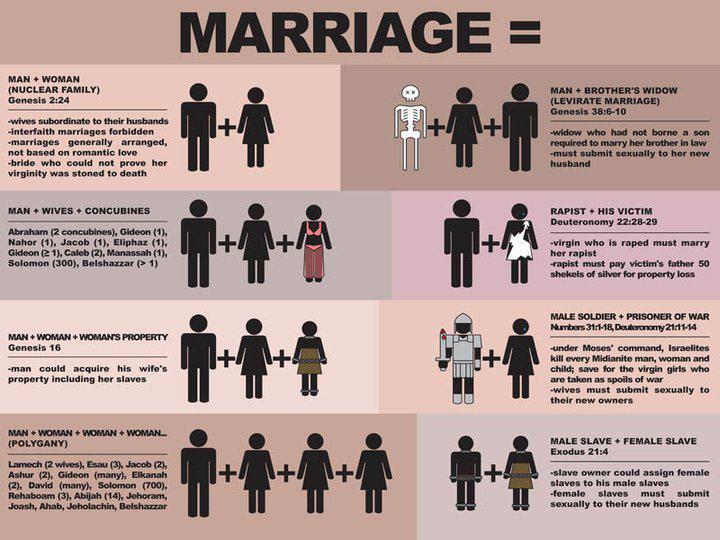

Religion and Marriage
This chart has been circling the Internet. What’s interesting about wedding tradition 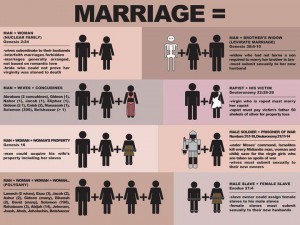 today is that it is mostly shaped by pop culture and media, whereas back in the day it was influenced mostly by religion. This chart lays out the various verses that relate to marriage, sex and women’s issues. While a lot of these practices are not as commonly practiced, I thought I might address ones that are:
today is that it is mostly shaped by pop culture and media, whereas back in the day it was influenced mostly by religion. This chart lays out the various verses that relate to marriage, sex and women’s issues. While a lot of these practices are not as commonly practiced, I thought I might address ones that are:
Man + Women (Nuclear Family) bride who could not prove her virginity was stoned to death – this still happens in the middle east and sub-Sahara in what is justified as an honor killing. Honor killings are not limited to stoning but can also include burning, acid burning and other forms of abuse. For example, in Iraq 2007, a 17-year old girl, Du’a Khalil Aswad, was stoned to death in an honor killing because she fell in love with someone outside her religion. She was from a minority Kurdish religious group called Yezidi, and the boy was a Sunni Muslim. Iraqi Security forces stood by and watched as she was dragged into a square and publically flogged until her death. Pools of her blood collected around her body in the middle of the street. Not one person in the crowd tried to save her. The entire event was captured on camera and released on the Internet (Warning: Graphic Violence)
Man + Woman + Woman’s Property – This was called coverture and wasn’t outlawed until 1933.
Man + Woman + Woman + Woman – An estimated 30,000 to 50,000 people live a polygamist lifestyle in the US.
Rapist + His Victim – While no one forced a victim to marry their rapist, one parallel issue that could be drawn is how state abortion laws treat pregnant victims of rape. First, states that outlaw abortions outright are leaving little choice for its constituents, along with the states that limit the victim’s freedom to chose the outcome of their pregnancy and have control over their own bodies.
Male Slave + Female Slave – The Department of Justice estimates that more than 250,000 American youth are at risk of becoming victims of commercial sexual exploitation. Each year an estimated 800,000 to 900,000 human beings are bought, sold, or forced across the world’s borders [2003 U.S. State Department estimate]. Among them are hundreds of thousands of teenage girls, and others as young as 5, who fall victim to the sex trade. in 1999 that more than 200 international matchmaking services operated in the United States, arranging 4,000 to 6,000 marriages annually between American men and foreign women, mostly from the Philippines and former Soviet Union.
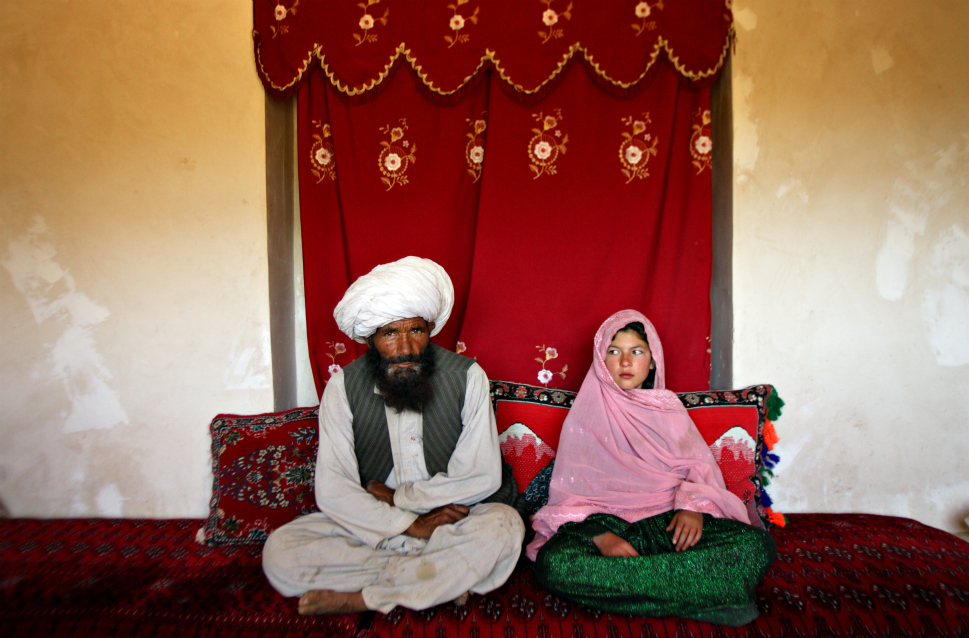

The Young and the Betrothed – Child Brides
While many of us fret over unimportant issues related to our own weddings or believe that our freedom of choice on how to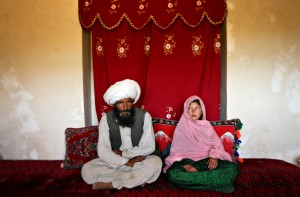 marry is a sign of progress, we must remind ourselves that equality and humanity in marriage is seldom enjoyed in other parts of the world. From the denial of gay marriage to the following issue of child bride, we must remember that many existing forms of marriage violate basic human rights. It is up to us who are privileged enough to enjoy healthier forms of marriage to not turn our backs on those who still need help.
marry is a sign of progress, we must remind ourselves that equality and humanity in marriage is seldom enjoyed in other parts of the world. From the denial of gay marriage to the following issue of child bride, we must remember that many existing forms of marriage violate basic human rights. It is up to us who are privileged enough to enjoy healthier forms of marriage to not turn our backs on those who still need help.


Could You Have A “Naked Marriage?”
Before you start getting all shy and reserved, this is not about a nudist colony wedding.  A “naked marriage” is a new Chinese term to describe newlyweds who forego all the consumerist, expensive tradition of a typical Chinese wedding. Do you think you can strip away all the wedding traditions that require you buy a dress, rings, a lavish ceremony and just marry on your merits of love?
A “naked marriage” is a new Chinese term to describe newlyweds who forego all the consumerist, expensive tradition of a typical Chinese wedding. Do you think you can strip away all the wedding traditions that require you buy a dress, rings, a lavish ceremony and just marry on your merits of love?
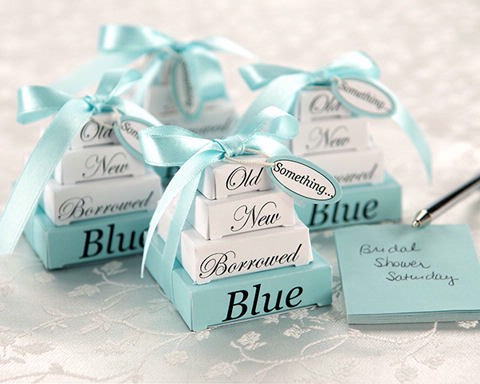

Meaning of “Something Old, Something New, Something Borrowed, Something Blue”
“Something old, something new,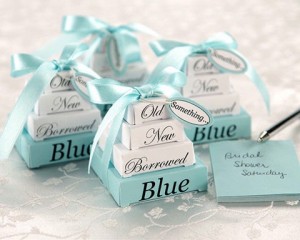
Something borrowed, something blue,
And a silver sixpence in her shoe.”
Ever wonder what this rhythmic superstition meant? While no bride should ever feel the need to be superstitious on her big day, these bridal superstitions where there to add a little extra karma to the special day. Bottom line is though, feminist brides don’t need superstition to ward off bad juju or collect extra luck; you’ve thought long and hard and just know in the pit of your stomach you’re making the right choice to marry and who you marry. Nonetheless here’s the background on this little ditty.
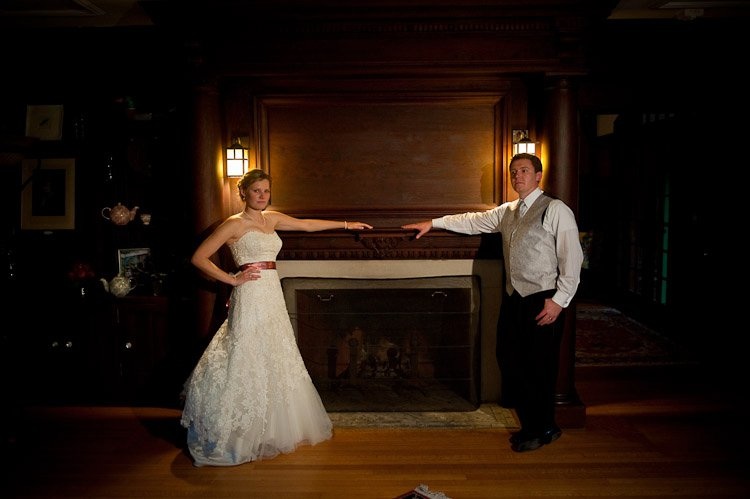

Why Women Change Their Last Names After Marriage
As The Feminist Bride this topic is the most distressing to me. After researching all wedding 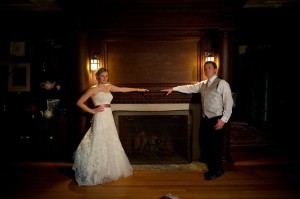 traditions there are three that earn the top obsolete, sexist and promoting inequality – engagement rings, bridal showers and name change. Now, women are starting to understand that third-wave feminism is about choice, but I have to say that when it comes to name change it isn’t an educated one.
traditions there are three that earn the top obsolete, sexist and promoting inequality – engagement rings, bridal showers and name change. Now, women are starting to understand that third-wave feminism is about choice, but I have to say that when it comes to name change it isn’t an educated one.
There are three reasons why the tradition of women adopting their spouses names exists.
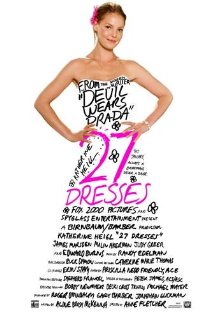

Feminist Bride Movie Review – 27 Dresses
![]() 27 Dresses (2008) – A young women (played by Kathering Heigl) has always been a
27 Dresses (2008) – A young women (played by Kathering Heigl) has always been a 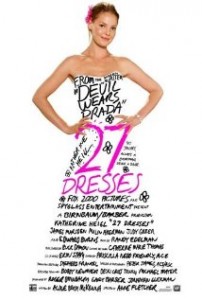 bridesmaid and never a bride, but the lucky owner of 27 hideous bridesmaid dresses. While the movie is a classic, predictable rom-com and Heigl’s character tends to be a pushover when it comes to the wishes of needy brides, she never manages to attend to her needs (and love life). The movie is a good look at the obscene financial commitment and dedication bridesmaid devote to their engaged friends, but also how totally vain and based in consumerism it can be as well. Director: Anne Fletcher (Subject: Bridesmaid, Consumerism, Love, Money, Vanity, Clothes)
bridesmaid and never a bride, but the lucky owner of 27 hideous bridesmaid dresses. While the movie is a classic, predictable rom-com and Heigl’s character tends to be a pushover when it comes to the wishes of needy brides, she never manages to attend to her needs (and love life). The movie is a good look at the obscene financial commitment and dedication bridesmaid devote to their engaged friends, but also how totally vain and based in consumerism it can be as well. Director: Anne Fletcher (Subject: Bridesmaid, Consumerism, Love, Money, Vanity, Clothes)
Wedding Contract by Males and Dowry Dispute Leaves Bride in Poverty
Yes, Virginia [Woolf] dowries so still exist! The writer who insisted women 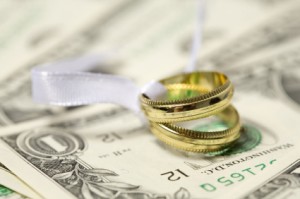 must have their own income would be upset about this law decision and the culture leading up to it in all capacities. Our Canadian neighbor’s B.C. Supreme Court turned down a petition for payment of a dowry under a marriage contract authorized in a sharia court of Amman, Jordan. Seems that the dowry and sharia were contracted by the bride’s uncle, leaving her to live in poverty after her divorce.
must have their own income would be upset about this law decision and the culture leading up to it in all capacities. Our Canadian neighbor’s B.C. Supreme Court turned down a petition for payment of a dowry under a marriage contract authorized in a sharia court of Amman, Jordan. Seems that the dowry and sharia were contracted by the bride’s uncle, leaving her to live in poverty after her divorce.
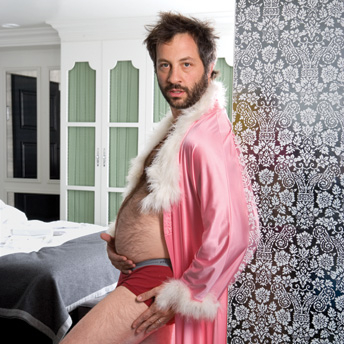

Judd Apatow Puts on Some Panties in ‘Bridesmaid’
Having turned 18 at the birth of the Sex and the City era, college and adulthood came at a time when  sexual expression and alcohol could be worn like Girl Scout badges, proudly and with accomplishment. It was the best of times (that I could remember) and the worst of times (that were gladly hazy). The graduates of the millennium celebrated leaving the sophomoric comedy of American Pie and blissfully embraced the gratuitous ass shots of Will Ferrell. And just as quickly as we got on “double-secret-probation” in college,” we just as quickly matriculated from it. Now working stiffs and pissed off about having $160,000 in college debt, Judd Apatow appeared to ease our pain with raunchy and outrageous humor.
sexual expression and alcohol could be worn like Girl Scout badges, proudly and with accomplishment. It was the best of times (that I could remember) and the worst of times (that were gladly hazy). The graduates of the millennium celebrated leaving the sophomoric comedy of American Pie and blissfully embraced the gratuitous ass shots of Will Ferrell. And just as quickly as we got on “double-secret-probation” in college,” we just as quickly matriculated from it. Now working stiffs and pissed off about having $160,000 in college debt, Judd Apatow appeared to ease our pain with raunchy and outrageous humor.

